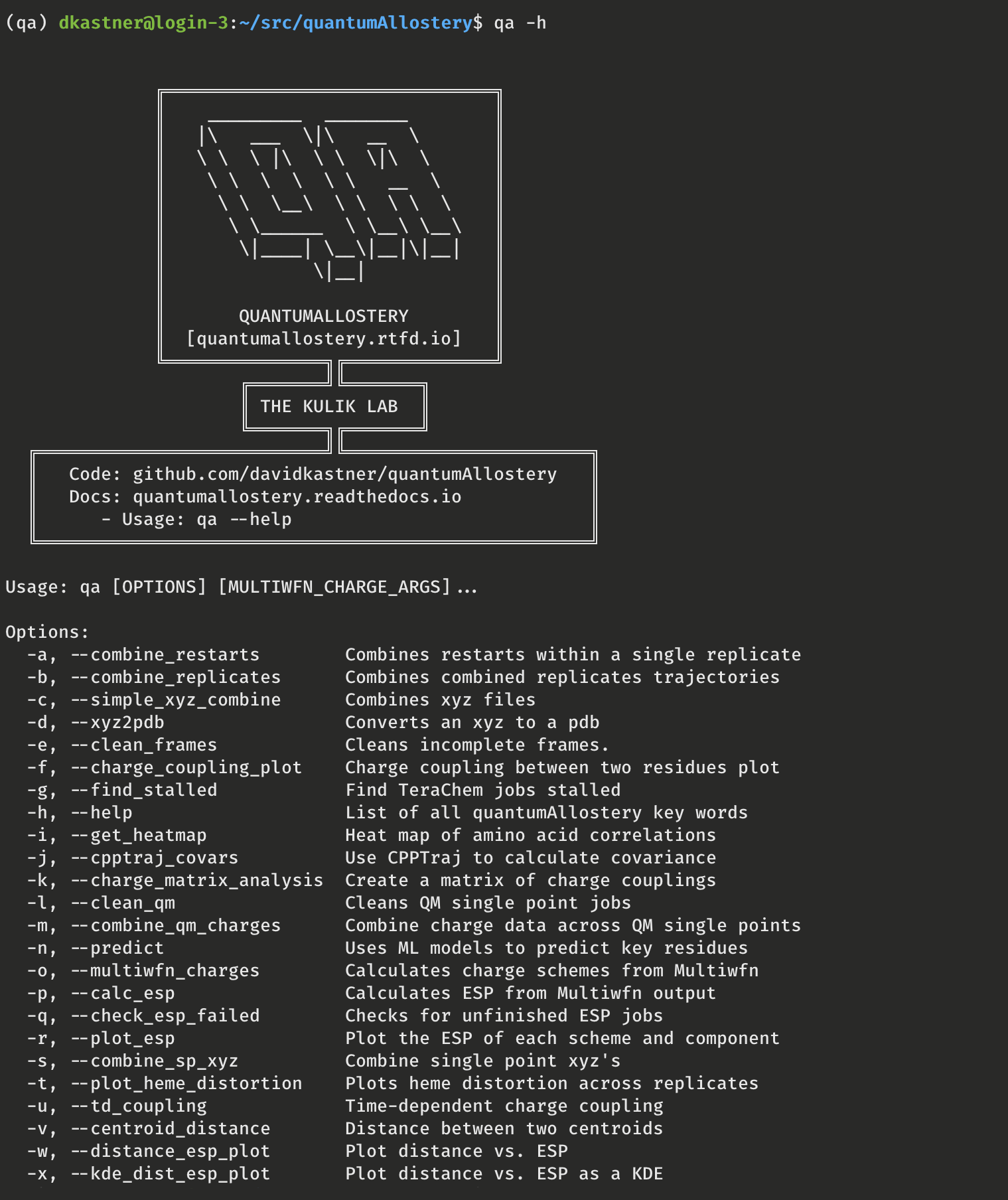- Overview
- Quick Start
- Accessing QA functions
- Installation
- Creating python environment
- Install pyQMMM package
- What is included?
- File structure
- Command line interface
- Documentation
- Update documentation
- Examples
- Developer Guide
- GitHub refresher
The quantumAllostery (QA) package automates the identification of charge coupling interactions in ab-initio molecular dynamics (AIMD) simulations. Routine tasks can be easily automated using the functionality contained in the library.
To get started, once qa has been installed, run qa --help or qa -h to see the available actions.
Install the package by running the follow commands inside the repository. This will perform a developmental version install. It is good practice to do this inside of a virtual environment. A yaml environmental file has been created to automate the installation of dependencies.
Remember to update your GitHub ssh keys.
git clone git@github.com:davidkastner/quantumAllostery.git
cd quantumAllostery
All the dependencies can be loaded together using the prebuilt environment.yml. Compatibility is automatically tested for python versions 3.8 and higher. Installing all packages together via the yaml will produce a more robust and efficient environment.
conda env create -f environment.yml
conda activate qa # You may need to use source activate qa
Next, we will perform an development install:
python -m pip install -e .
This is the the package structure for reference and its included modules.
.
|── cli.py # Command-line interface entry point
├── docs # Readthedocs documentation site
├── qa # Directory containing the quantumAllostery modules
│ ├── process # Processes the raw AIMD data
│ ├── predict # Machine learning analysis
│ ├── manage # File management functionality and routines
│ ├── analyze # Data analysis to combine process and plot routines
│ ├── reference # Definitions and conversion dictionaries for amino acids
│ └── plot # Automated plotting and vizualization
└── ...
The contents of the library are designed to be navigated through the commandline interface. Add the following line to your bash.rc
alias qa='python /the/path/to/quantumAllostery/cli.py'
Now you can call the quantumAllostery package CLI from anywhere with:
qa
Run the following commands to update the ReadTheDocs site:
make clean
make htmlgit status
git pull
git add -A .
git commit -m "Change a specific functionality"
git push -u origin main
git checkout main
git pull
# Before you begin making changes, create a new branch
git checkout -b new-feature-branch
git add -A
git commit -m "Detailed commit message describing the changes"
git push -u origin new-feature-branch
# Visit github.com to add description, submit, merge the pull request
# Once finished on github.com, return to local
git checkout main
git pull
# Delete the remote branch
git branch -d new-feature-branch
git stash push --include-untracked
git stash drop
git pull
Copyright (c) 2022, David W. Kastner
MolSSI version 1.1.

